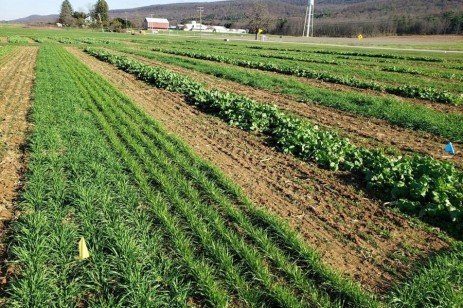Now is the time to start thinking about the establishment of a cover crop. If herbicides such as glyphosate, paraquat, 2,4-D, or dicamba are being used prior to cover crop establishment remember to consider the replanting interval. For glyphosate and paraquat, most cover crops can be planted after application. However, depending on the rate of 2,4-D applied, at least a week to four-weeks waiting period is necessary before establishing cover crops. If small grain covers are being established, some research suggests that a minimum delay of 7-10 days after application at rates of 1 pint/acre of 2,4-D ester. Also, other studies have shown that certain clovers (e.g., red and crimson) and alfalfa may be established within the same constraints with 2,4-D ester. To be certain, a longer waiting period and rainfall help to reduce the potential for injury. Dicamba usually requires at least a couple weeks or more before certain cover crops can be planted and this also is directly related to the amount applied. Some have asked about the use of products such as Sharpen, Liberty, and Elevore as a burndown prior to cover crop planting. Currently, there is not adequate data on this utility for these products. However, from reading the labels, some suggestions can be made. Sharpen (1 fl oz) has no restrictions for small grains but has a 1 month wait period for other cover crops (species not specified); Liberty has a 70 day wait period for small grains, but canola can be planted anytime, and for Elevore, small grains, ryegrass, and canola can be planted after 14 days but there is a 9 month wait for clover and mustard species. Keep in mind, once some of these products (e.g., Sharpen) are applied, they cannot be harvested or grazed for livestock feed. Refer to appropriate herbicide labels for more details.
Penn State Extension researchers conducted a field study in 2020 at Rock Springs to examine the effects of commonly used burndown herbicides prior to fall cover crop establishment. In summary, the use of Group 4 (auxin) herbicides as a burndown treatment prior to fall cover crop establishment tend to be risky. However, depending on what species is selected (e.g., cereal rye or ryegrass) and when it will be planted (>7 days after application) some Group 4 herbicide options could still be useful. Furthermore, from the preliminary data, other herbicides such as Sharpen and Liberty might have a fit since they are generally safe to many cover crop species and can control problematic weed such as glyphosate-resistant marestail/horseweed and Palmer amaranth. These could be tankmixed with glyphosate for broad spectrum burndown prior to cover crop establishment. Further research will need to be conducted at this and other locations to verify the results.





Post a comment
Report Abusive Comment